Injection Molded Films (IMD): How It Works

We continue to share experience in the field of serial production of enclosures for electronics. In the last article, we explained on fingers how an injection molding machine works, and showed typical errors in the design of the mold casting housing. This time we will focus on the IMD (In-Mold Decoration) technology - this is the name for the molding of plastic products using a special film to create various visual effects and strengthen the design.
Under the cut - a brief overview of the technology and a dozen photos directly from the production department at a Chinese factory.
')
How it works
In the production of casings according to the technology of casting with films (IMD), the film is laid in the nest right in the casting cycle, and at the output we get a solid product consisting of plastic and film.
Here is what the plastic film feeding device looks like:

Image source: Fa. Kurz
In the process of manufacturing the case, the polymer film (or fabric, or thin wooden veneer, or even leather) is placed in one of the halves of the mold - usually in a matrix, i.e. static part - and fixed in the desired position with special calipers, electric or pneumatic.
When the mold halves are closed, a closed cavity is formed, into which the polymer is poured, and the film is fused into the cooling plastic of the fresh product and becomes its integral part. After removing the cast part of the case, the film can no longer be separated from the plastic, therefore the IMD technology gives a much better, reliable and durable result than the use of self-adhesive films.
Where is it used
The first IMD technology is used for decorating the surface. Initially, it was used not to glue the label on the package, but to solder it. It is faster and more durable. Then the topic was developed. The label began to cover all large surfaces, and moved from the informative theme to design. Now it is design + functionality + unusual effects that help to highlight the product on the market.
So, a film can brand a product; at the expense of it, information about the manufacturer and the product can be applied to the surface of the case, various materials can be simulated, for example, wood or metal.
When applying the film, you can create optical effects (holograms, broken lines, faces):
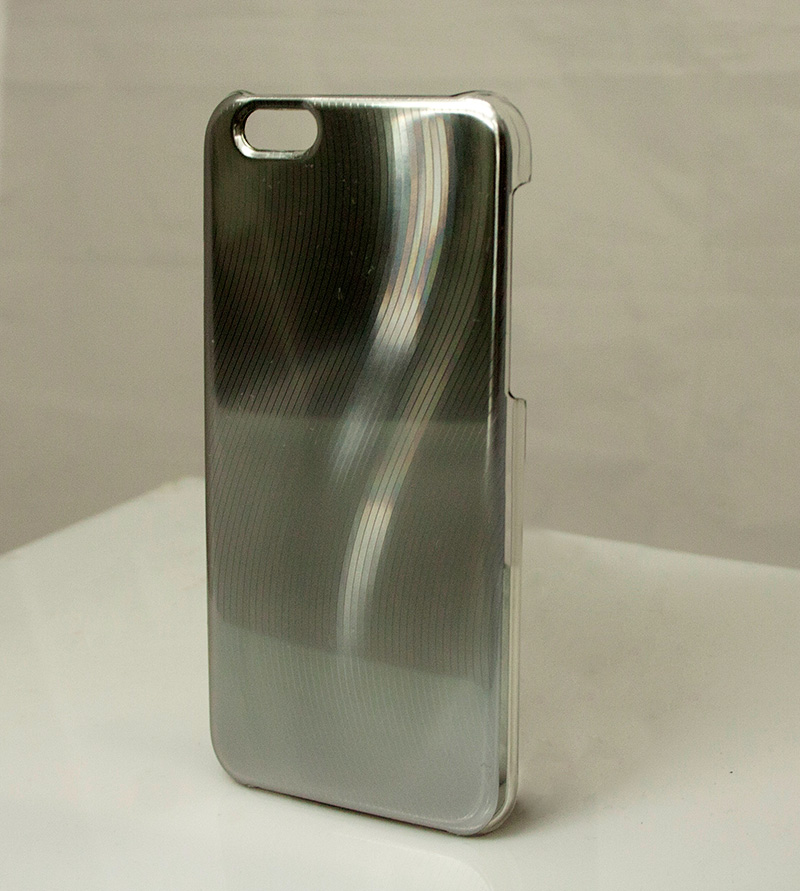

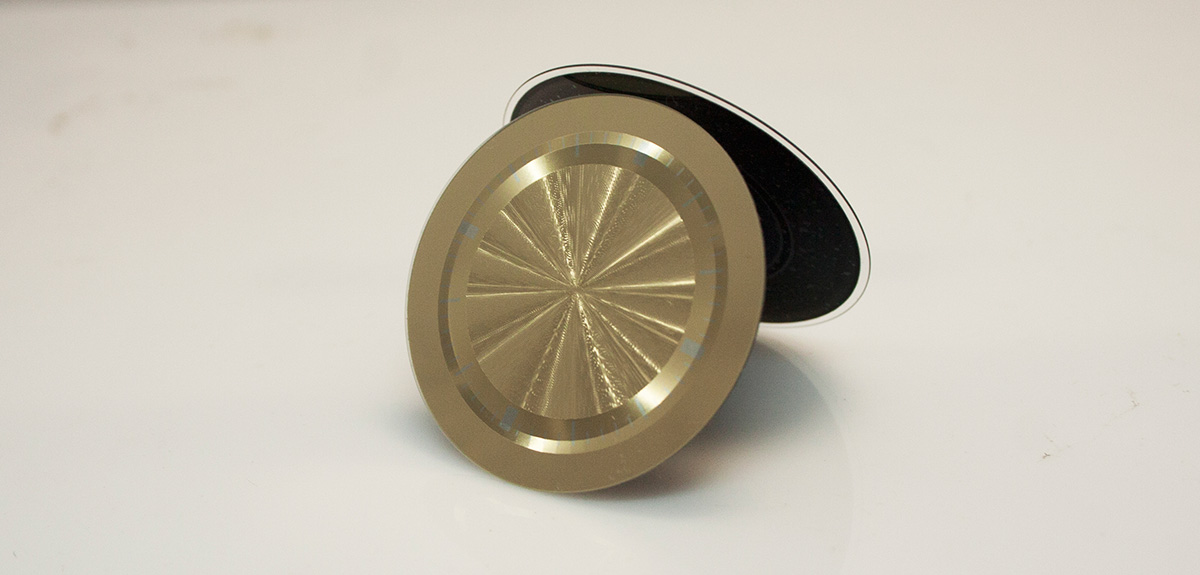
Due to the texture film, you can create various tactile sensations, from soft-touch effect to rough shagreen. Now it is one of the most sought after capabilities of IMD technology. The fact is that if you do the texturing of the surface directly in the mold, then this is once and for all. And to change the quality of the surface will have to develop and order a new mold, and this will take time and a budget of tens of thousands of dollars. While using the film allows you to change the texture of the surface "on the fly." For example, you can make five body samples with a different surface, touch each prototype live, study the opinion of potential users, and immediately launch the required version into production.
Another interesting effect that can be obtained when casting with decorating in the form - giving depth to the product. Most often, the film is applied over the visible part of the body, but if it is applied in the inner side of the semi-transparent polymer body, the same depth is obtained:
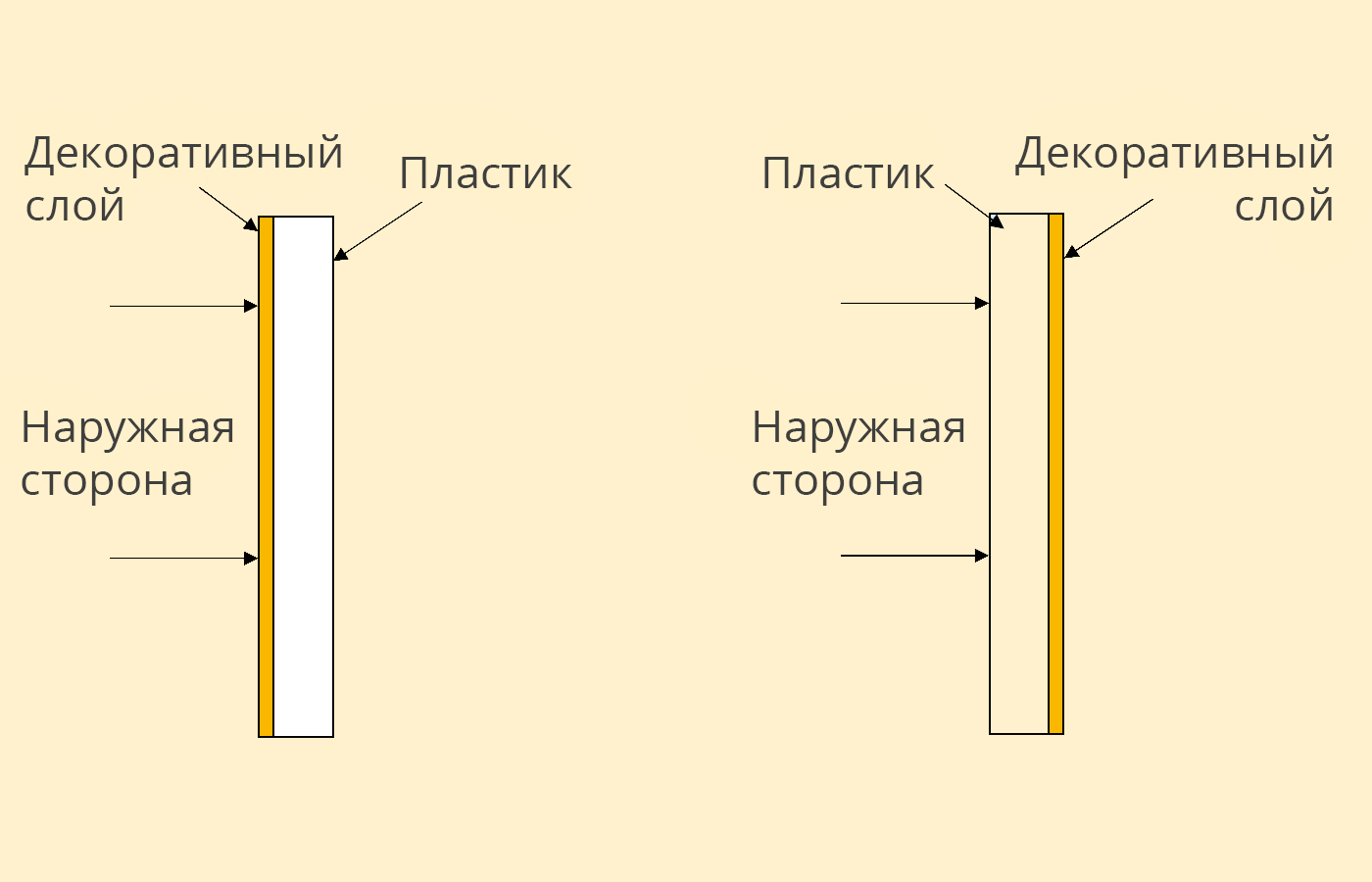
Another possible reason for using casting with films is the need to strengthen the body structure. The film gives rigidity, which may be required by the technical characteristics of the device:

In this case, the film performs a dual function: it decorates the case and gives strength to the potentially fragile back cover of the device from thin plastic.
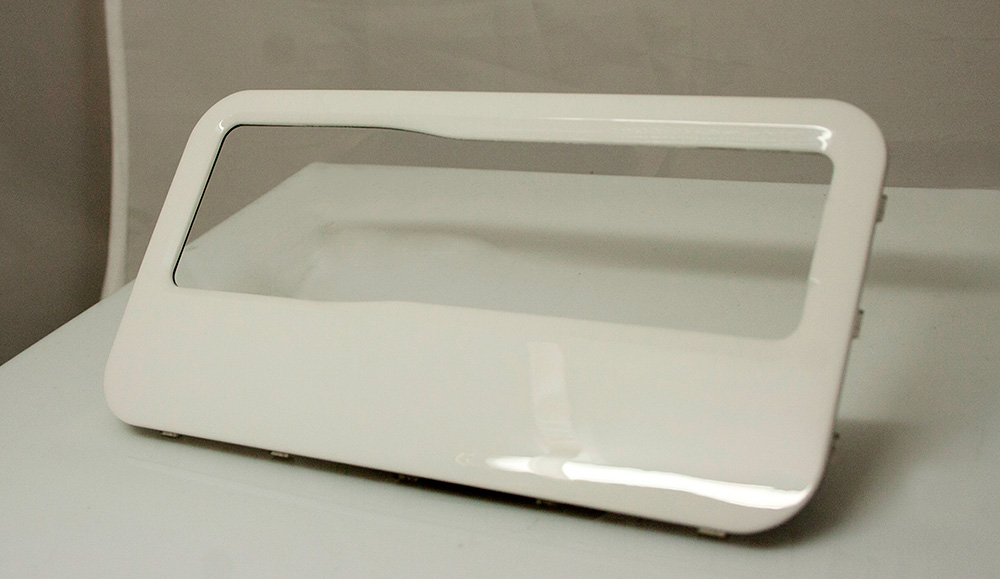
The film not only strengthened the construction of this white body panel above (it was applied on the outer surface), but also allowed the implantation of the display:

The result was an interesting effect of sealed touch buttons with backlight without the use of light guides.
The films are actively combined with transparent polycarbonates, this technology is called DD-IMD or Deep draw IMD. You must have seen how this works in various control panels and in the display. In the solder with transparent polycarbonate, Lenka covers separate fragments of the case (for example, a printed circuit board), and opens other areas (for example, a display):
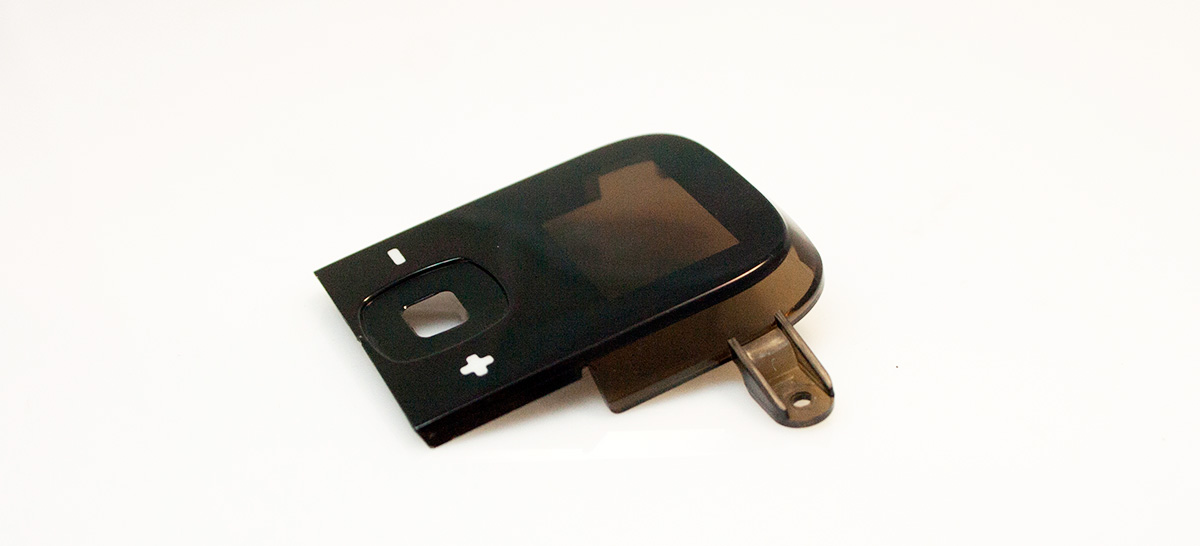
In the same way, according to the DD-IMD technology, the buttons on the case are signed:

By production of this body the standard material is used - PC
The technology of casting films is used not only in the production of cases for electronics, but also for packaging, in details for trimming the car and in children's toys.
Advantages and disadvantages of IMD technology
Firstly, casting with films allows to implement almost any idea of industrial designers and designers without the need to replace equipment in production. Simply select the desired film (single or in roll) and simply replace one with another.
Secondly, the IMD technology, unlike hand-painted, pad printing or silk-screen printing, reduces production costs through automation: the cycle time is short - you can produce large volumes in a short period of time at a relatively low cost. The refusal of manual labor in the application of films significantly reduces the scrap rate.
Of course, molding with decorating has its drawbacks and limitations, like any other production technology. IMD requires special equipment that is not available at every factory. And even if there is, you have to personally visit the production line, check samples (as in any other case of mass production of cases in China).
Also when applying the film is very important geometry. The film is applied to a flat horizontal surface without problems, but if radial surfaces are provided in the housing, it is necessary to analyze possible problems further and then modify either the housing itself or debug the equipment so that the film lies perfectly. So, on the one hand, the capabilities of the film give the designer freedom in choosing colors, design and texture, on the other - they limit the shape of the body.
On this we will finish a brief educational program on casting with films. If you come across this technology, share your own examples in the comments - photographs and stories of technologists. Of course, we are primarily interested in everything related to the production of cases for household appliances and consumer electronics.
A separate question from the Promwad technologist: do readers have experience of soldering the film not into classic PC and ABS, but into more exotic materials?
Source: https://habr.com/ru/post/431550/
All Articles